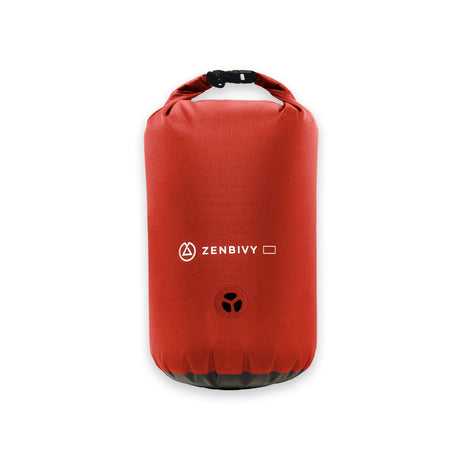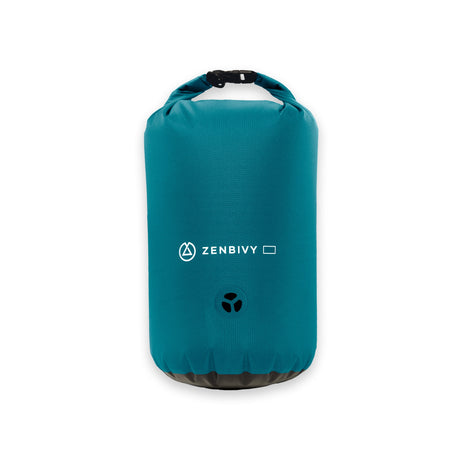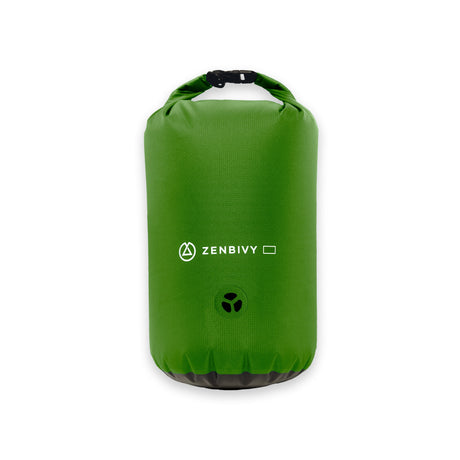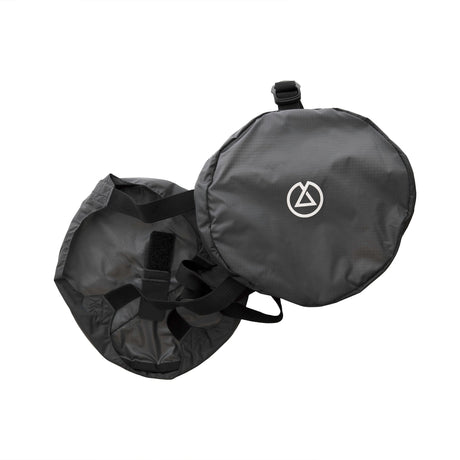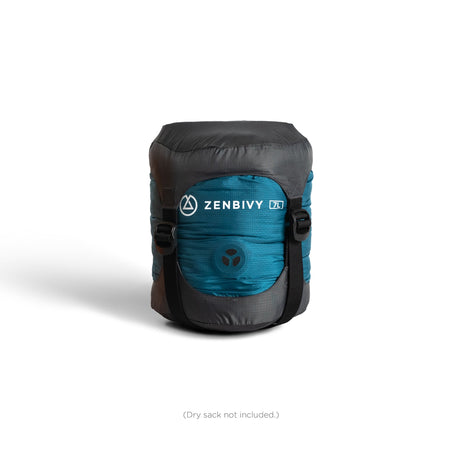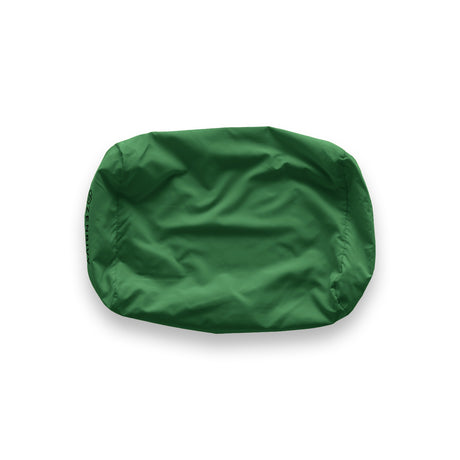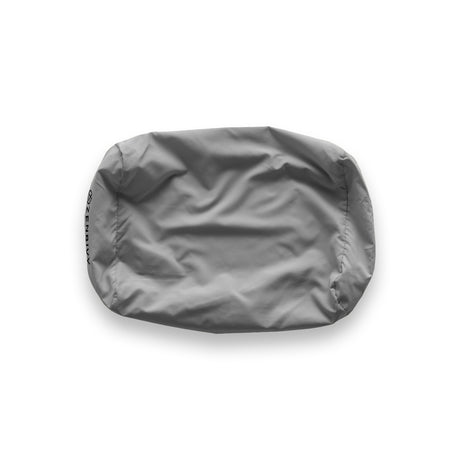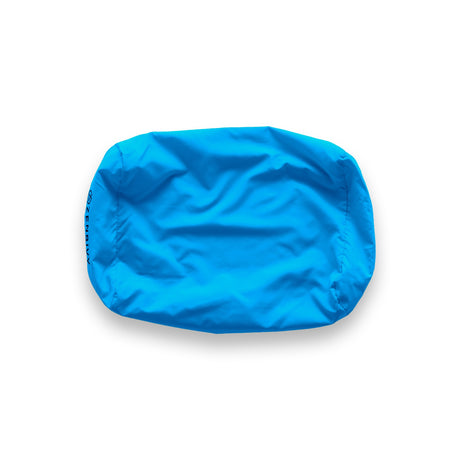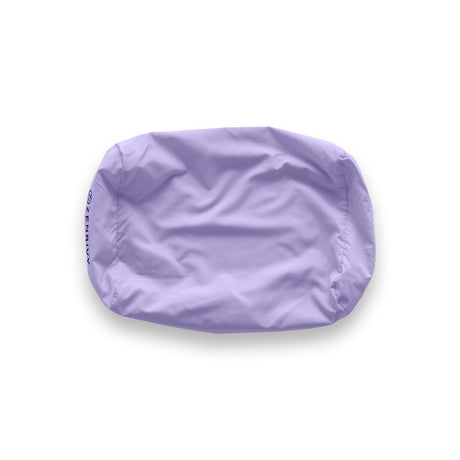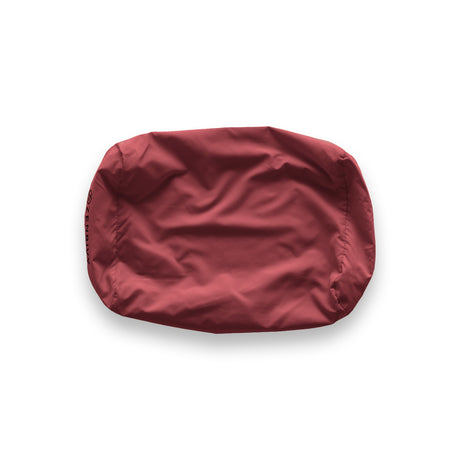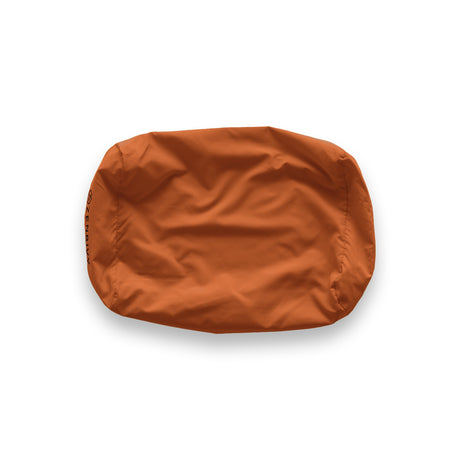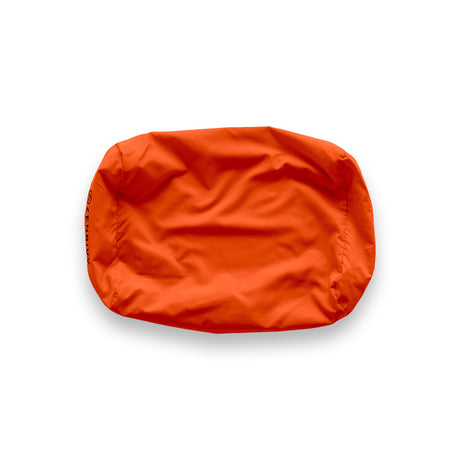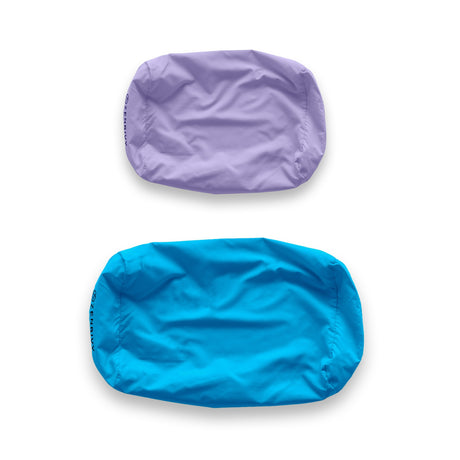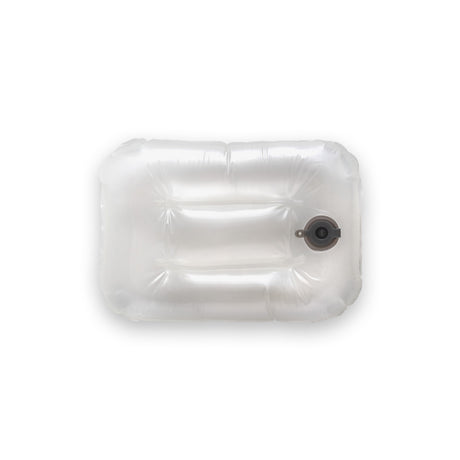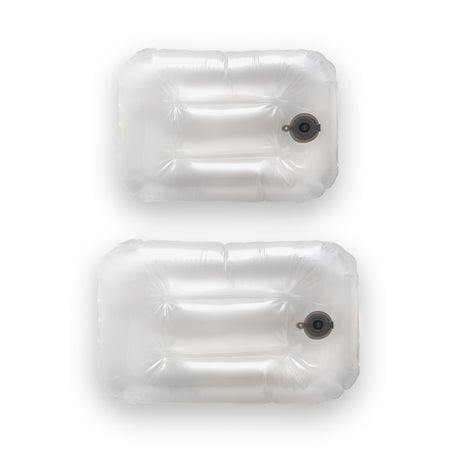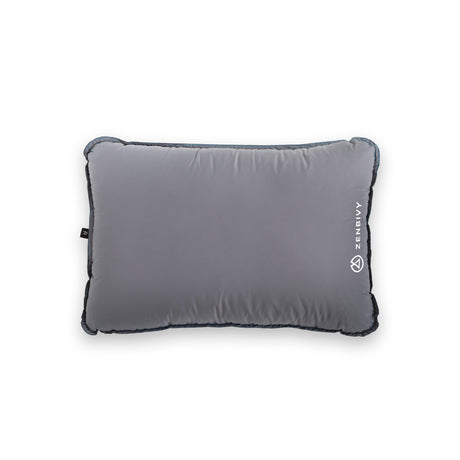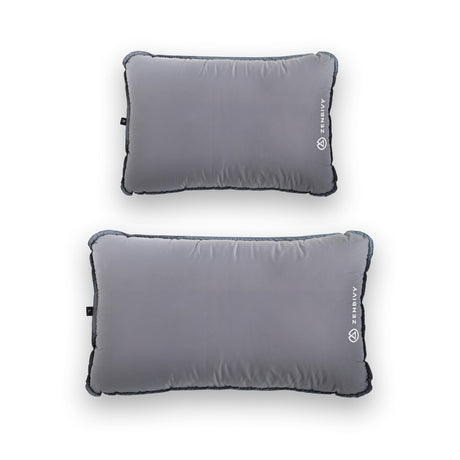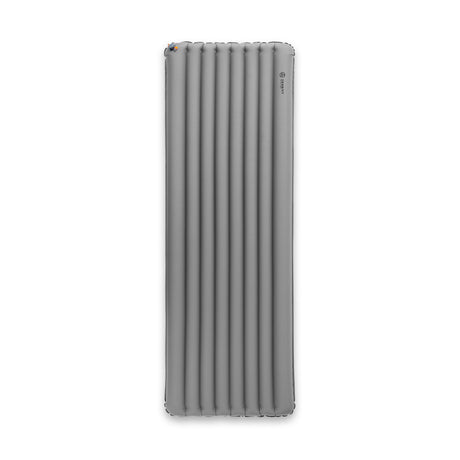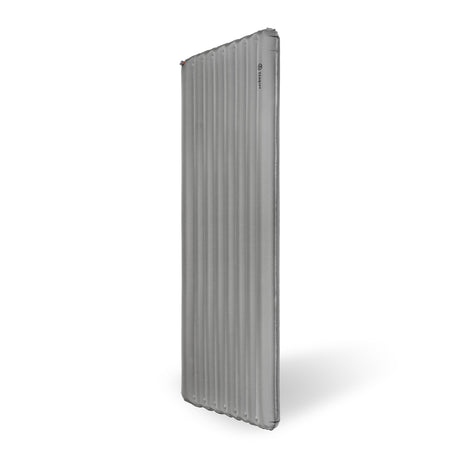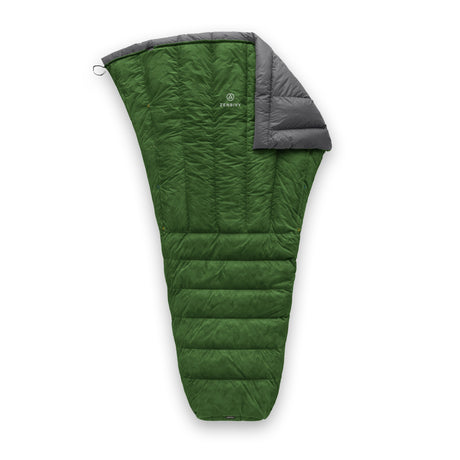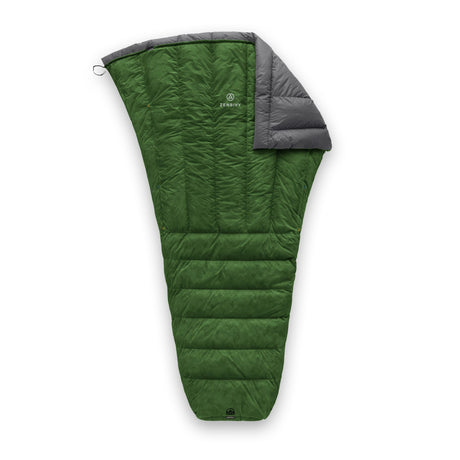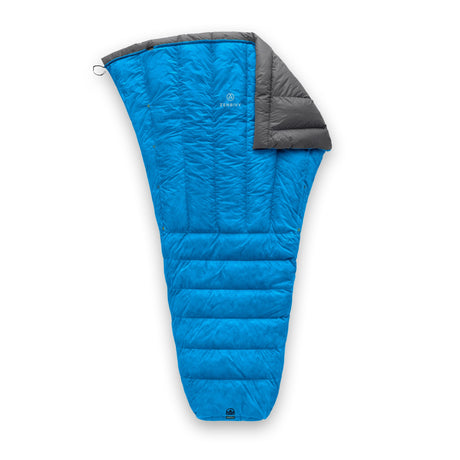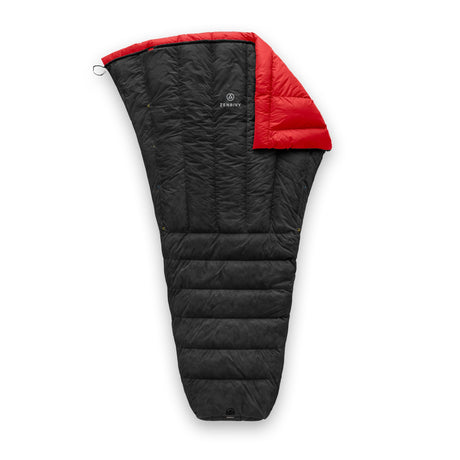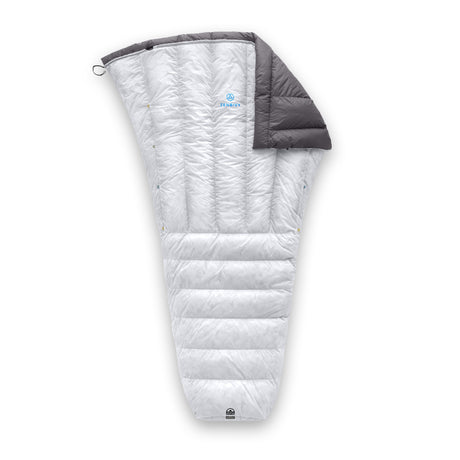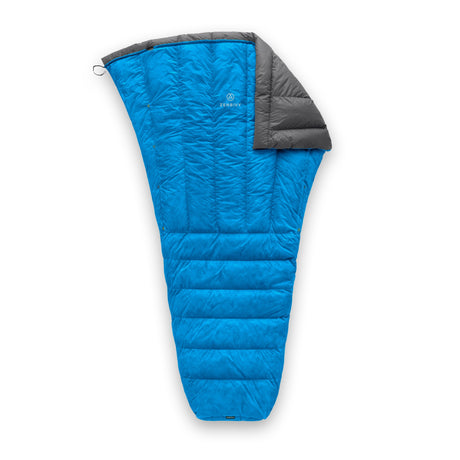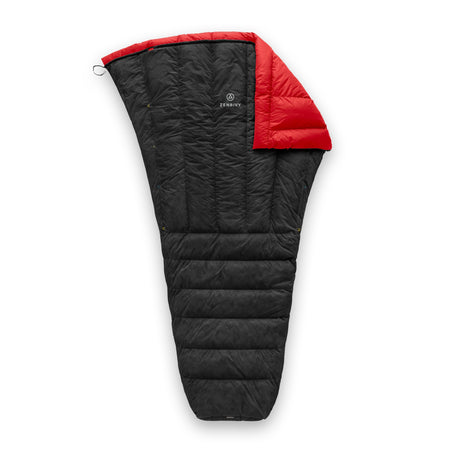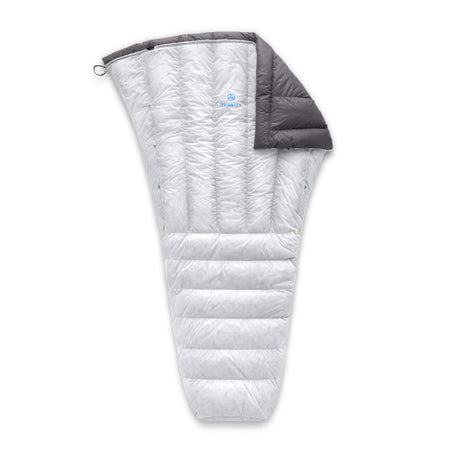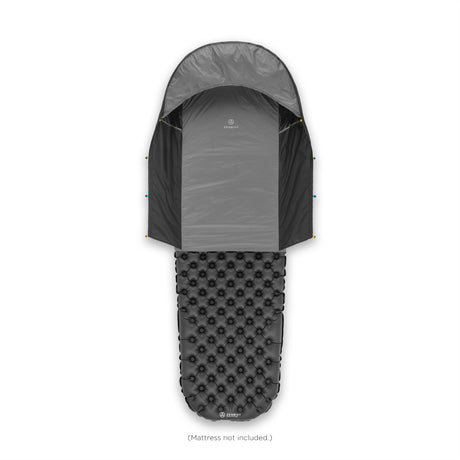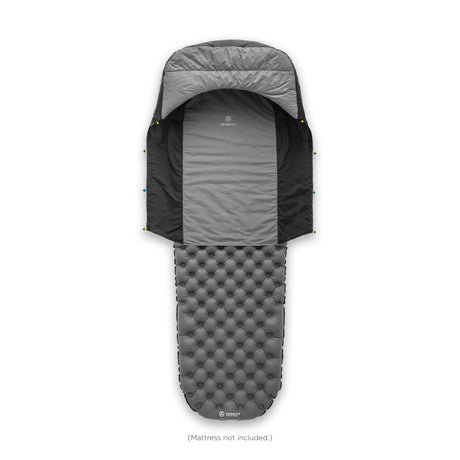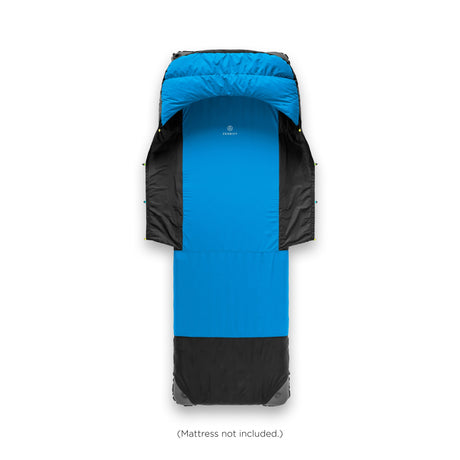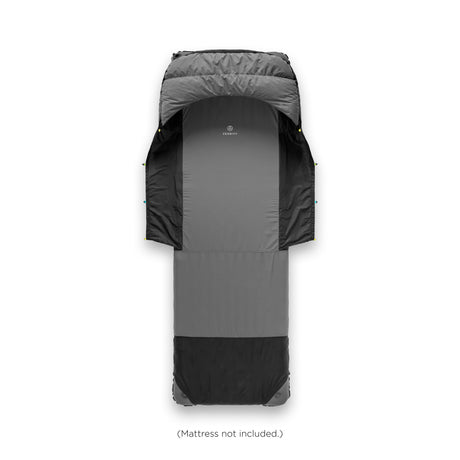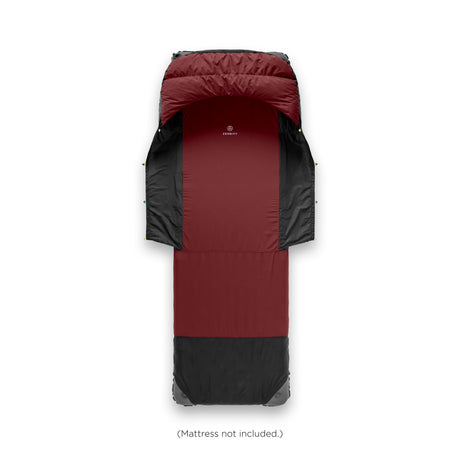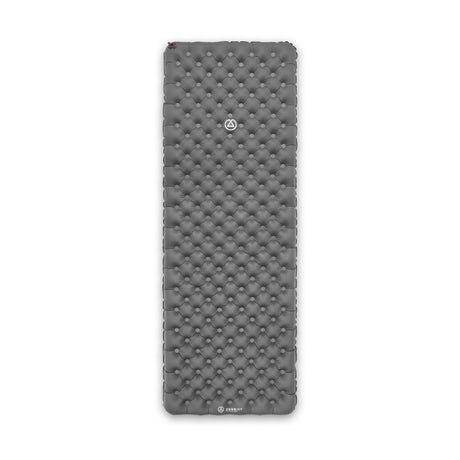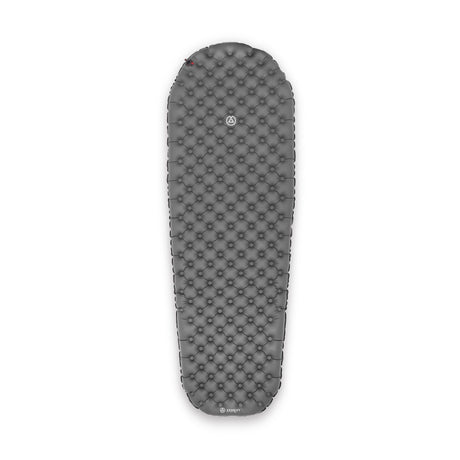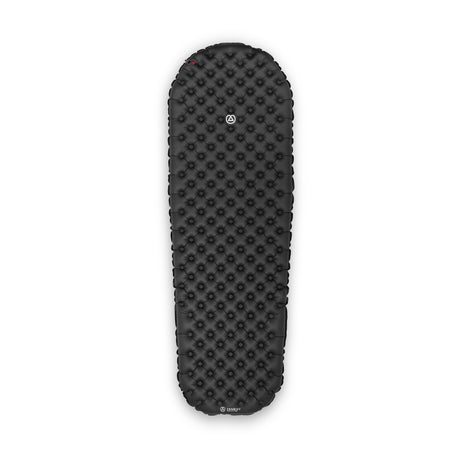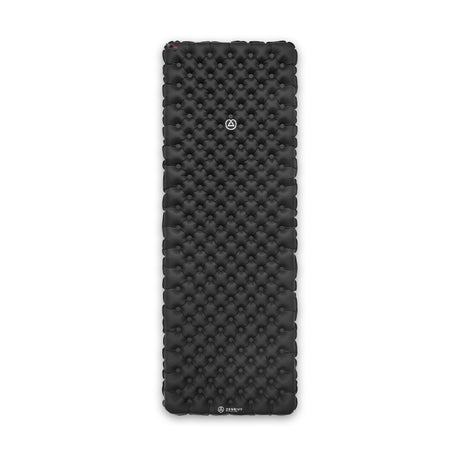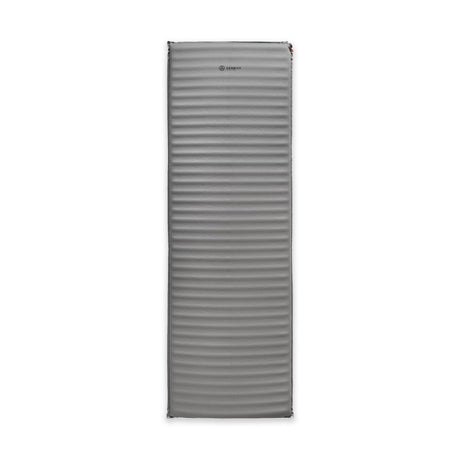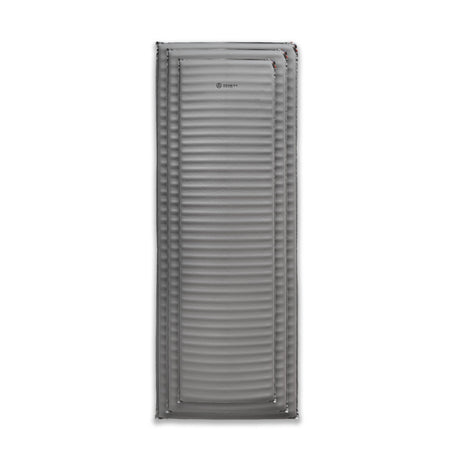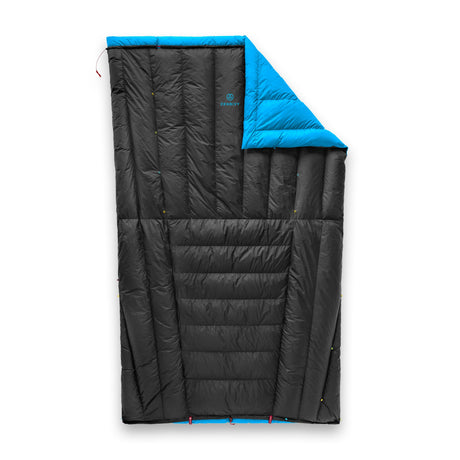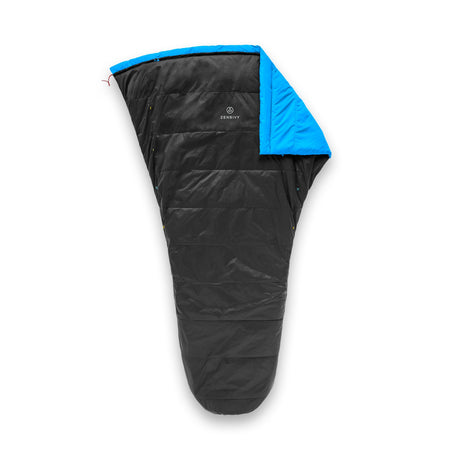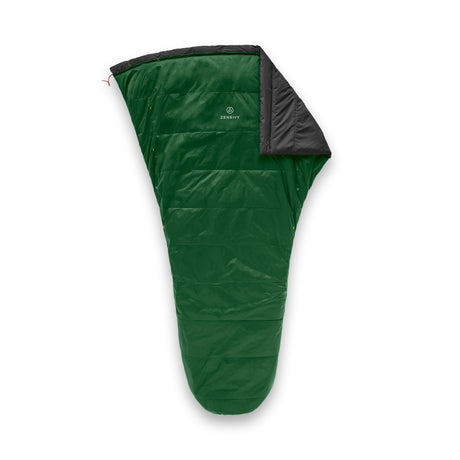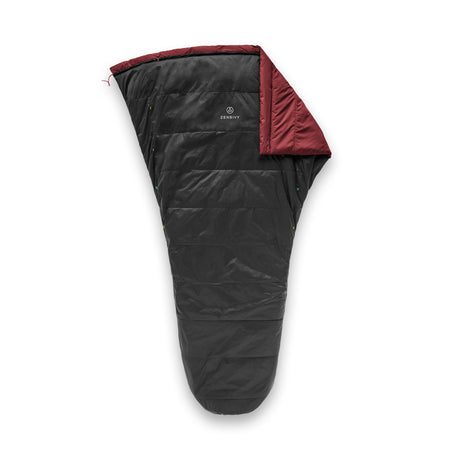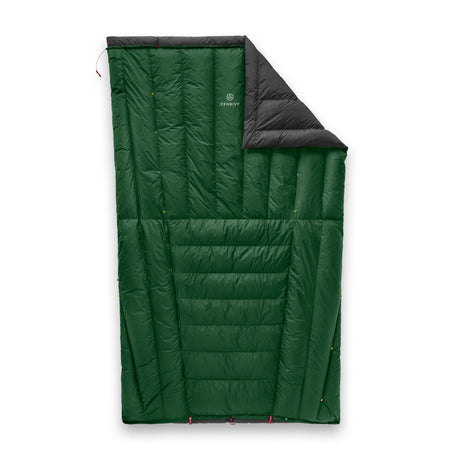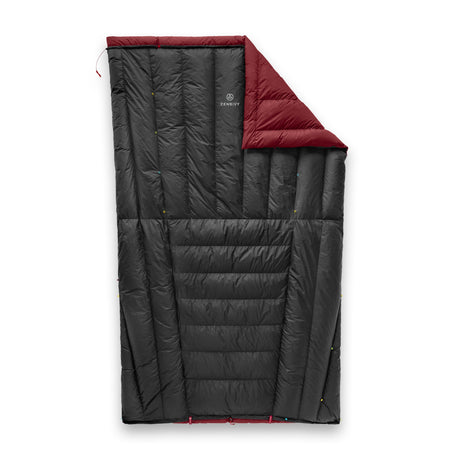When you’re shopping for a sleeping bag you may find yourself at a crossroads, right on the corner of Synthetic Street and Down Drive. Ah yes, the classic camp debate of which insulation is better. Is down warmer? Is synthetic more water-resistant? Which is cheaper? More compressible?
We'll compare the pros and cons of down vs. synthetic to hopefully help guide you in the right direction towards your perfect sleep system. Let's dive in...
Weight, Warmth, Packability
First off, what is down? Despite what you may think, down filling is not made from feathers. It’s made from goose or duck plumage, the fluffy layer of insulation directly beneath the feathers. So what does this fluffy insulation look like and how does it keep us warm? Down clusters are three-dimensional structures with thousands of filaments that criss-cross to create air space. Just as a sponge traps water, down clusters trap warmth while still allowing moisture and air to move through, away from your body.
Synthetic insulation is made from polyester fibers that are arranged and intertwined to mimic the loft of down clusters. Synthetics aim to provide the same warmth-to-weight ratio that down does, but this man-made insulator is not able to beat nature at her own game. Synthetic insulations have a heavier warmth-to-weight ratio than the same temperature down bag. They also don't compress as well (or as effortlessly) as down. Down is the lightest sleeping bag insulation. It's nature's mid-layer and despite our best efforts in science we’ve still not managed to create a more effective insulator for these applications.
Water-Resistance & Performance
Conventional wisdom would have us believe that synthetic insulations outperform down in wet conditions, but conventional wisdom is wrong. While it is true that synthetics will insulate better than down when they are wet, it is also true that synthetics soak up water while down is naturally hydrophobic. It's simply much harder to get a down bag wet in the first place and with the recent invention of water-resistant down, that's truer than ever.
When down is first harvested from a duck or goose, it is water repellant - natural oils on the plumage make water fall away so that it can keep insulating. When down is processed and washed, some of these oils are removed. There have been improvements in washing methods to remove less of these naturally water-repellant oils, but generally DWR ("durable water repellant") treatments are used to restore down’s natural ability to repel water. There are several on the market right now, including the HyperDRY™ down from Allied we use in our products. This premium down uses a natural wax-based compound to make it water-resistant. It is both durable and fluorocarbon-free.

Price & Personal Preferences
Synthetic sleeping bags are cheaper than down sleeping bags. No ifs, ands, or buts about it. Price alone can drive the decision for a lot of campers deciding between down and synthetic.
Personal preferences and beliefs also play a role. Synthetic materials are vegan friendly. The Responsible Down Standard has become the worldwide certification for ensuring down is responsibly sourced. Zenbivy is proud to be RDS compliant. All of our quilts have a tag with a code that allows you to track the down used back to its source. Nevertheless, down is an animal product and it is not vegan friendly.
Synthetic materials are also the saving grace for people that are allergic or have allergy-like symptoms to down products. Fun fact: Did you know that an actual allergy to down is very rare? Most people that experience reactions to down are not allergic to the down itself, but rather to unclean down. It is important to buy clean, quality down products.
Key Takeaways
Down insulation has the best warmth-to-weight ratio. Our water-resistant down will not soak up water like synthetic. Its lightweight nature and compressibility make it a great choice for those that want the lightest, warmest, most compact gear.
Synthetic insulation is built for those on a budget and/or those that vow against the use of animal products. Synthetic insulation will outperform down when wet. The affordability also makes synthetic a great option for those brand new to camping.



